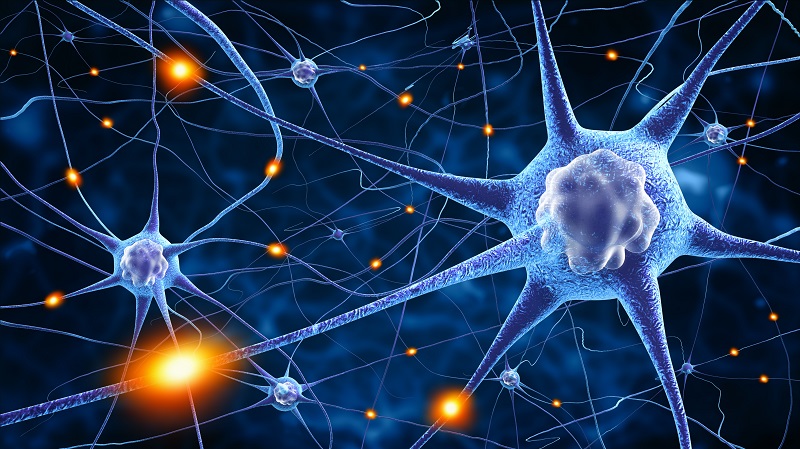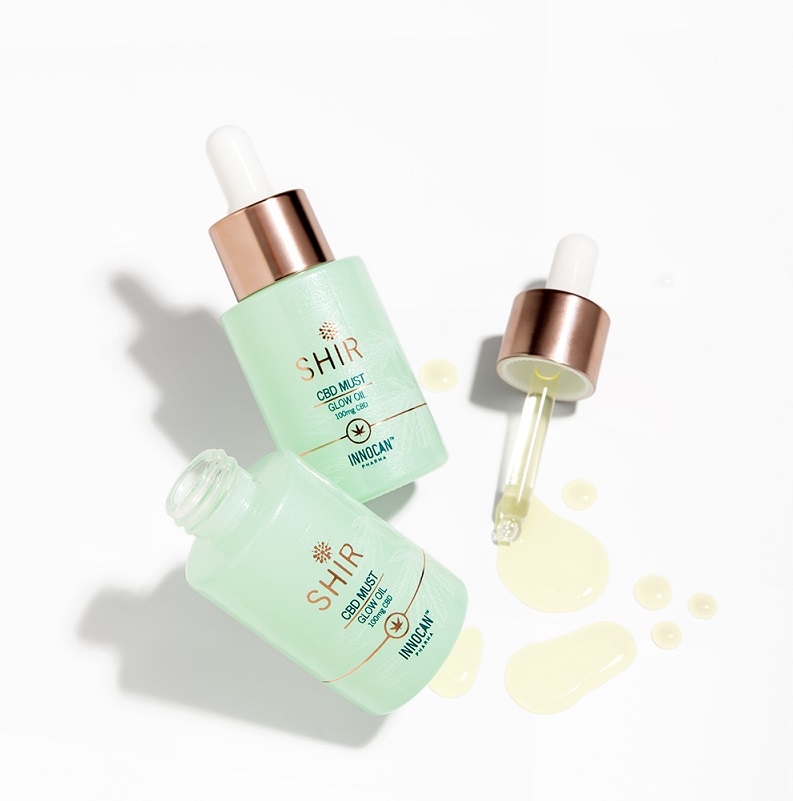Using Topical CBD to Tighten & Tone The Skin

One of the unwanted effects of aging is in the form of fine lines, wrinkles, and folds that commonly appear in the exposed areas of the body, such as face, neck, and arms. While aging is inevitable, these visible signs need not be. In recent times, the spotlight is on CBD or cannabinol, which has emerged as an effective anti-aging remedy due to its potent antioxidant and anti-inflammatory properties.
Derivatives from the Cannabis Sativa plant have been used to treat a number of conditions- anxiety, epilepsy, sleep disorders, skin conditions, and chronic pain relief. Cannabis Sativa derivatives have also been used to improve appetite and to relieve pain in HIV and oncological patients.
CBD’s potential as a therapeutic agent in controlling seizures was discovered in the 80s, and several studies since then have been conducted that support the same.
The hemp plant is the natural source of cannabinoids, which are a group of naturally occurring chemicals in the Cannabis Sativa plant. While the plant has more than 400 different substances, 66 are identified as cannabinoids. Cannabidiol or CBD is one such non-psychoactive compound that has medicinal properties. Although both marijuana and hemp belong to the same cannabaceae family of plants, marijuana plants, by definition, contain more than 0.3% of THC (Tetrahydrocannabinol), the psychoactive compound that leads to the feeling of being ‘high.” Fiber-rich Cannabis Sativa plants are cultivated for their fiber and have less than 0.3% of THC and are not controlled substances.
A brief history of CBD
Cannabidiol or CBD is one of the many chemicals found in the Cannabis Sativa plant. It belongs to a group of compounds called cannabinoids.
A British scientist by the name of Robert S. Cahn discovered cannabinol’s (an individual cannabinoid) partial structure, while the entire structure was revealed in 1940. Cannabidiol or CBD was discovered in 1942 by an American chemist, Roger Adams. The spatial arrangement or stereochemistry of cannabidiol was discovered in 1963 by the Israeli scientist and professor Raphael Mechoulam. In 1964, scientists also discovered the structure of THC or Tetrahydrocannabinol, the major psychoactive compound in the Cannabis Sativa plant.
The molecular similarity between THC and CBD lead to scientists speculating that CBD was the natural precursor to THC. Subsequent research into the subject later has shown that THC and CBD are produced in the cannabis plant independently.
While the Cannabis Sativa plant has more than 480 compounds, 66 of these are compounds that are recognized as “cannabinoids.” The cannabinoids are grouped into:
- Cannabigerols (CBG)
- Cannabidiols (CBD)
- Cannabinol (CBN)
- Cannabinodiol (CBDL)
- Cannabichromenes (CBC)
- Tetrahydrocannabinols (THC)
- Others such as cannabitriol (CBT), cannabicyclol (CBL) and cannabielsoin (CBE)
After extraction, cannabidiol is mixed with therapeutic and essential carrier oils, including almond oil, avocado oil, coconut oil, hemp oil, or olive oils. These CBD-integrated topical products are available in the form of anti-aging eye serum, body lotion, facial cream, sleeping mask, body oil, anti-aging facial serum, and pain relief spray, among others.
In 2013, hemp extracts attracted the attention of the world due to several anecdotal accounts of its therapeutic effects with respect to treatment-resistant epilepsies in children, particularly, Dravet syndrome. Pre-clinical evidence, reviewed by Hill et al, also supports CBD’s anticonvulsant (anti-seizure) properties.
While several therapeutic effects of CBD have been investigated, a key benefit that studies support is with reference to its anti-aging properties.
Skin and aging
The skin, apart from being the largest organ in the human body, has many important roles. While it acts as a protective barrier for environmental challenges and pathogens, it produces several hormones, apart from regulating body temperature.
The skin has three major layers, where the outermost layer called the epidermis provides the first line of defense against foreign invaders. This layer is further divided into five sub-layers, where there are thicker keratinocytes and thinner cells that are constantly replenished. The second layer, known as the dermis, contains oil glands, sweat glands, connective tissue, hair follicles, skin health proteins, collagen, and elastin. Collagen, being a structural protein, offers structural integrity to tissues while elastin maintains the elasticity of the skin.
The process of aging starts at the cellular level. With age, gradually, there is accumulation of random molecular damage. The natural defense mechanisms and antioxidants produced in the body can repair such damage. However, the efficacy of such repair mechanisms reduces with age and are not optimal.
Multiple internal and external factors are associated with the process of aging. The external or exogenous factors that can hasten the process of aging and appearance of wrinkles and sagging of the skin are environmental pollutants and stress. Certain medications and treatments, such as those given for cancer, including radiation and chemotherapy, can also weaken the repair system in the cells.
According to Kirkwood, the unrepaired damage at the molecular level that randomly and gradually occurs is linked to the process of aging. This process causes cellular defects, along with tissue dysfunction associated with age-related degenerative diseases such as Alzheimer’s.
All kinds of molecular components of the body are susceptible to such damage, and these include DNA, organelles, lipids, and proteins. Sources of molecular damage include:
- Intrinsic reactive oxygen species or ROS
- External factors including environmental toxins, ultraviolet rays and radiation, wrong diet, genetics, stress, smoking, or lack of physical activity.
Studies show that one of the key characteristics of aged skin is a reduction in the amount of collagen that is produced. Ultraviolet photodamage can enhance this effect, leading to a further reduction in collagen, apart from the destruction of existing collagen. Such destruction of collagen is linked to the unwanted consequences of aging, including sagging skin, creases, crow’s feet, fine lines, and wrinkles.
With less than optimal production of collagen, the skin loses the original firmness and elasticity. A hydrophilic compound, known as hyaluronic acid (HCA), present naturally in the skin’s dermal layers also helps in maintaining the integrity of the skin. As hyaluronic acid has the capacity to hold a huge amount of water, it helps plump up the skin and maintains its volume. With age, however, there is less of hyaluronic acid produced while photodamage destroys the amount of HCA in the skin. The overall combined effect of these actions is thinner, dry, and less flexible skin that develops fine lines, wrinkles, and folds. The oil glands located in the dermis layer of the skin normally produce oil that keeps the surface of the skin hydrated. With age, there is a decline in oil production in the skin that compounds the harsh effects of aging.
ROS (reactive oxygen species) or free radicals are produced in the body due to many factors described in the subsequent text. These radicals set up a vicious chain of destructive reactions at the cellular level, which ultimately damage the DNA of cells that are healthy. Scientists have linked DNA damage as a result of free radical oxidation reaction to chronic illnesses such as cardiovascular disease, cancer, and Alzheimer’s.
Replacing the destroyed collagen and stepping up its production apart from arresting free radical damage is crucial to restoring the integrity of skin, which then boosts the tone and tightness of the skin.
Reactive oxygen species and aging
The process of aging is marked by the slow-down in organ function and progressive tissue loss. The two key concepts that play a major role in the process of aging are reactive oxygen species (ROS), also called free radicals and oxidative stress.
Reactive oxygen species are produced in the human body by several internal and external processes. The negative effects of these radicals are neutralized by the body’s antioxidant defenses. Oxidative stress is a condition that occurs when there is an imbalance between the production of reactive oxygen species and innate antioxidant defenses. In other words, when there is more reactive oxygen species produced than antioxidants, the result is oxidative stress.
Free radicals are molecules or atoms that have unpaired electron or electrons in their outer shell. Having these unpaired electrons makes these molecules highly reactive and unstable. These radicals are formed in cells and play a crucial role in aging and age-related diseases.
Endogenous or internal sources of free radicals are the many components of the metabolic pathway through which energy is released in the body cells. Exogenous or external free radical sources are water and air pollution, alcohol, tobacco use, heavy metal contamination, industrial solvents, smoked meat, reused oil, and exposure to radiation. All of these are metabolized as free radicals in the body.
The oxidative stress link to aging is a theory based on the speculation that the functional losses that are age-associated are due to an accumulation of free radical-induced damages. Oxidative stress is also implicated, at the same time, to many age-related health conditions such as diabetes, cardiovascular diseases, cancer, neurodegenerative diseases (Alzheimer’s, dementia), and pulmonary diseases.
Different biomarkers of oxidative stress have been identified that help researchers assess the efficacy of antioxidant therapies that can combat reactive oxygen species-induced damage.
Although the exact mechanism of how oxidative stress induces aging is not clear yet, excessive levels of reactive oxygen species are known to cause cellular senescence where cellular proliferation (growth and division of new cells) are stopped because of the damage that occurs to cells. Senescent cells give rise to pro-inflammatory chemokines, interleukins, and growth factors that worsen the consequences of aging, leading to poor skin tone, wrinkles, fine lines, and creases.
How CBD helps tone skin and prevent wrinkles
The endocannabinoid system was discovered in the 1990s and regulates a host of physiological functions such as sleep, mood, energy, pain sensation, digestion, and immunity. This system is made up of endocannabinoids that are of two types (anandamide and 2-arachidonoylglyerol) and cannabinoid receptors, which are also of two types (CB1 and CB2). Endocannabinoids are neurotransmitters that bind to the cannabinoid receptors, and the exact effect they bring about depends on where the receptor is located. CB1 receptors are located in the brain, while the immune system and gastrointestinal systems have CB2 receptors. If an endocannabinoid binds to the CB1 receptor in the brain, it can help in relieving pain, while others could bind to CB2 receptors present in immune cells, triggering an immune response.
Cannabidiol or CBD has a positive influence on the endocannabinoid system. Although the exact mechanism of its action is being investigated, researchers believe it indirectly activates CB1 and CB2 receptors while preventing the breakdown of endocannabinoids.
CBD, according to researchers, exerts potent antioxidant effects. In-vitro studies show that CBD is more protective and potent as compared to well-established natural antioxidants such as vitamin C and α-tocopherol. CBD also shows antioxidant properties at submicromolar concentrations that prevent cell death.
A study sought to understand the efficacy of topical CBD, such as pain relief spray and pain relief roll-on, in healing fractures. Researchers found topical CBD products accelerated fracture healing by stepping up collagen production. CBD-infused facial creams, eye serums, or anti-aging facial creams can help boost collagen production while fighting reactive oxygen species-induced damage. The overall effect is a toned skin, free from fine lines, wrinkles, and creases.
The epidermis layer of the skin also contains melanocytes, a type of specialized cells that produce a pigment called melanin. While melanin imparts color to the skin, it also exerts a protective effect on the skin by preventing extrinsic damage from ultraviolet rays and pollutants. Excessive exposure to UV rays and environmental toxins are implicated in the aging process, as well as premature aging, apart from skin sensitivity and sunburn.
In a study, researchers explored CBD’s role and efficacy in boosting melanin production or melanogenesis. It was found that CBD was effective in increasing melanin production within the epidermis. The researchers concluded that CBD was a viable therapeutic agent to prevent the consequences of photodamage and UV rays that lead to poor skin tone and laxity.
The powerful antioxidant properties of CBD has been extensively studied. As CBD is a natural plant derivative, CBD-integrated topical products such as anti-aging eye serum, sleeping mask, facial serum, or body oil have the ability to quench free radicals while reversing the distressing signs of poor skin tone and fine lines.
More articles:




